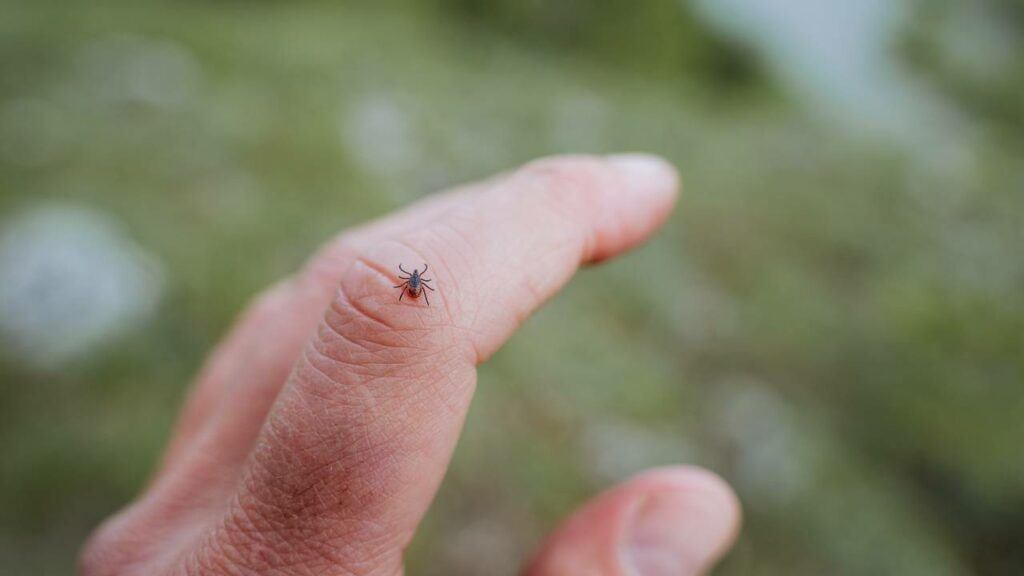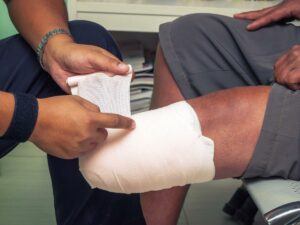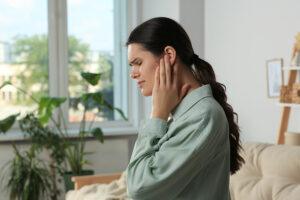The Vital Facts
- There are over 70 species of tick in Australia, 17 of which can attach and feed on humans
- Over 95% of tick bites in Eastern Australia and most tick-borne diseases are due to the Paralysis Tick
Spending time in the great outdoors can be incredibly fun and rewarding, but it also exposes us to potential risks, one of which is tick bites.
While these little creatures may seem harmless, it’s crucial to know how to handle a tick bite promptly and effectively or risk devastating consequences.
In this article, we will discuss what tick bites do, the symptoms to watch for, how to provide first aid for tick bites, and essential tips for avoiding them altogether.
Navigate the article:
- What Does a Tick Bite Do?
- Tick Bite Symptoms
- How to Provide First Aid for Tick Bites
- How to Avoid Tick Bites
- Complete a First Aid Course!
What Does a Tick Bite Do?
When a tick bites you, it uses its specialised mouthparts to pierce the skin and anchor itself. Then, it starts feeding on your blood. While doing so, it may transmit diseases into your bloodstream.
Not all tick bites result in disease transmission, but it’s crucial to be vigilant because early detection and proper first aid can make all the difference.
Tick Bite Symptoms
Recognising the symptoms of a tick bite is essential for early intervention. Unlike spider bites or bee and wasp stings, you may not feel immediate pain so you need to be proactive in looking for symptoms.
Redness and Itching
Tick bites will often lead to localised redness and itching at the site of the bite. While the severity and time of persistence will vary this is often an early indicator of a tick bite.
Pain and Swelling
Pain and swelling around the tick bite area are typical reactions to the tick’s bite and specifically its saliva. These symptoms can vary in intensity but are important to monitor.
A Circular Rash
The appearance of a circular rash around the tick bite is a distinctive sign of Lyme disease. This rash should be taken seriously, and medical attention sought promptly.
Flu-Like Symptoms
Tick-borne illnesses can sometimes manifest with flu-like symptoms such as fever, chills, fatigue, and muscle aches. These symptoms may develop days or even weeks after the tick bite and are significant warning signs that medical attention may be needed.
Joint Pain and Stiffness
Certain tick-borne diseases can lead to joint pain and stiffness. If you experience these symptoms following a tick bite, it’s crucial to address them promptly to prevent complications.
If you experience any of these symptoms after a tick bite, it’s essential to seek medical attention promptly.
How to Provide First Aid for Tick Bites
Knowing how to provide first aid for tick bites is crucial to prevent potential complications.
1. Remove the Tick Safely
- To be certain that you have completely removed a tick, use a tick removal product like Tick Off. Applicators like Tick Off can be purchased at a chemist and are designed to easily, quickly and safely remove ticks.
2. Clean the Bite Area
- After the tick has been removed, clean the bite area with soap and water or saline
- Disinfect the tweezers with rubbing alcohol or soap and water
3. Dispose of the Tick Properly
- Place the tick in a ziplock bag or container in case you need to show it to a healthcare professional
- Do not crush the tick with your fingers; this can release disease-causing pathogens
4. Monitor for Symptoms
- Keep an eye on the bite site for any signs of infection or an expanding rash
- If you develop symptoms like fever, chills, or joint pain, seek medical attention promptly
How to Avoid Tick Bites
Prevention is key when it comes to tick bites. Here are some essential tips for avoiding them if you spend a lot of time outdoors:
1. Wear Protective Clothing
- When spending time in tick-prone areas, wear long sleeves and pants
- Tuck your pants into socks and your shirt into your pants to create a barrier against ticks
2. Use Tick Repellent
- Apply tick or at least insect repellent to exposed skin and clothing
3. Perform Tick Checks
- After outdoor activities, thoroughly check your body, clothing, and gear for ticks
- Pay particularly close attention to warm and moist areas, such as the armpits, groin, and scalp
4. Shower After Outdoor Activities
- Showering can help wash off any unattached ticks and is an excellent opportunity for a tick check
5. Treat Your Pets
- Ensure your pets are protected with tick collars or repellents if they accompany you outdoors
Complete a First Aid Course!
You’ll immediately feel more comfortable and confident in providing first aid!
If you want to ensure the safety of you and your family, make sure you have the skills to respond to a medical emergency until professional medical assistance is available.
At Vital First Aid, our qualified first aid trainers are highly skilled and experienced, and all first aid students will receive a First Aid Certificate on completion.
To benefit from our range of first aid courses, sign up here.






